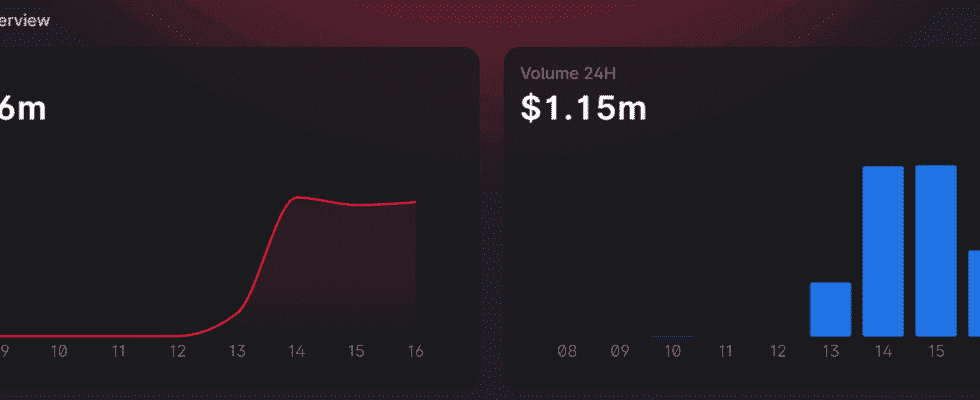Iron Finance is back from the dead and Uniswap is scaling up with Optimism. At the same time there was an exploit at THORChain – what happened this week in the Wild West of Decentralized Finance (DeFi)?
Also this week there was a lot going on in the Wild West of Decentralized Finance. The “DeFi ETF Token” DeFi Pulse Index (DPI) has lost 22.98 percent of its value on a weekly basis.
The tokens from decentralized exchanges were among the worst performers on the index. Uniswap (UNI), Blancer (BAL) and SushiSwap (SUSHI) lost between 28.37 and 32.21 percent of their market capitalization. In addition, Total Value Locked (TVL) also suffered a setback. Between July 9 and July 16, the capital in DeFi protocols’ smart contracts decreased from 58.6 to $ 55.21 billion at press time.
Risen from the dead: Iron Finance is back
Less than a month after the spectacular bank run at Iron Finance, the DeFi project is daring a fresh start. With IronSwap, a new token called ICE and a yield farm, Iron Finance wants to win back users through attractive returns.
Although the new yield farms do not yet contain an algorithmic stablecoin, it is still questionable how sustainable the extremely high returns of up to 613 percent per year are. The IS3USD liquidity pool shown in the graphic above is Iron Finance’s new flagship. The pool is a spin-off of the 3pool designs by Curve (CRV) and accepts stablecoin deposits in USDT, DAI and USDC. In addition, Iron Finance rewards all users who offer capital in the new liquidity pools with ICE tokens.
At the time of writing, Iron Finance’s new liquidity pools were already over $ 900 million in capital accumulate.
Hackers loot nearly five million US dollars from THORChain
On July 15th, the cross-chain swaps platform THORChain, which is extremely popular in the DeFi space, fell victim to a hacker attack.
According to official information from THORChain, Ethereum worth almost five million US dollars was looted.
In addition, THORChain stated that only liquidity providers who made Ethereum available on the decentralized exchange were victims of the exploit.
Now THORChain first wants to update its protocol, correct errors and then restart the network. As soon as this process is completed, the next step is to compensate all liquidity providers affected. How long this process will take is still unclear.
Shortly after the exploit, RUNE’s share price fell by over 14 percent. At the time of going to press, RUNE is trading just under the $ 5 mark.
Uniswap launches DeFi scaling solution Optimism
After more than two years of development, Uniswap opened the Launch of Optimism announced. Optimism is a Layer 2 scaling solution that uses so-called Optimistic Rollups to scale Uniswap. This should reduce transactions by up to 10 to 50 times cheaper than on the Ethereum mainchain.
According to one Blog post of the Uniswap team, it is now possible for DeFi users to transfer their digital assets to the Optimism Ethereum network. To do that, all you have to do is use the Optimism Gateway. You can see exactly how that works read here.
In addition, Optimism is already compatible with common wallets (Metamask, WalletConnect) and popular analysis sites such as Etherscan and The Graph. So far, however, Optimism is still very sluggish. Only 4.36 million US dollars are so far in Optimism’s smart contracts and the trading volume of 1.15 million US dollars within the last 24 hours is well below that of the Uniswap version on the Ethereum mainchain.
For comparison: the Smart Contracts of Uniswap V3 currently contain Ethereum mainchain version $ 1.58 billion and within the last 24 hours the trading volume was over there $ 844 million.
safety first
However, when making this comparison, one must bear in mind that optimism is only in the alpha phase and therefore cannot yet fully develop. Since you want to test the new technology for a few more weeks, the transactions are currently open limited to a maximum of 50,000 per day. Once this threshold is exceeded, the transaction fees increase until the number of transactions falls below the threshold again.
